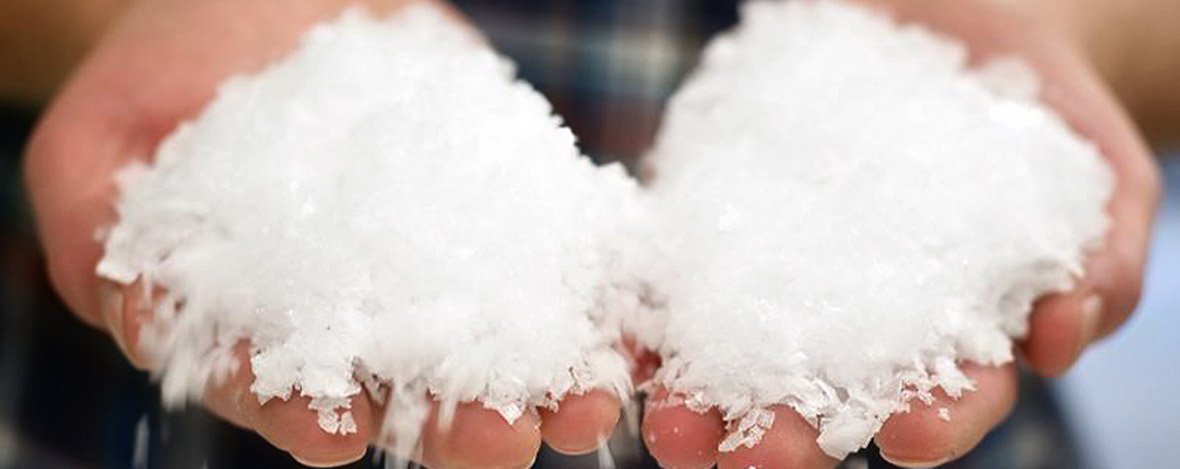
Translation missing: en.sections.article.title: Salt of the Earth
The Journal
Salt is easy to take for granted.
Everywhere we eat, from the morning breakfast table to late night binges at the local burger joint, there are shakers, packets, mills and bowls of the crunchy, granular stuff ready to be sprinkled (and sprinkled and sprinkled and sprinkled) on foods that need a little help in the flavor department.
But as author Mark Kurlansky wrote in his comprehensive 2003 book, Salt: A World History:
“Salt is so common, so easy to obtain, and so inexpensive that we have forgotten that from the beginning of civilization until about 100 years ago, salt was one of the most sought-after commodities in human history.”
From ancient Rome’s dispersing of salt rations to soldiers (aka "Salarium argentum", aka the precursor to the English word “Salary”), to Native Americans on Louisiana’s Avery Island use of salt as a bartering tool, to the Civil War battles in and around Saltville, Virginia, this most ubiquitous of staples has long been at the center of trade, economics, religion and naturally, mayhem, worldwide.
A GRAIN OF SALT
Modern dietary issues aside, salt has also always been an indispensable part of any cook’s arsenal, and today is no different. Using the right salt at the right time not only modulates bitter, sweet and sour tastes, it can also unlock monumental accents of flavor and vibrancy in food that may otherwise go unnoticed by your tongue.

What is different today, however, is that in recent years – in concert with the rising national consciousness in regards to the origin and quality of the foods we consume -- artisanal U.S. salt production is making a big comeback.
Hand-harvested with many of the exact same techniques used by makers centuries ago, cooks of all stripes have come to realize that replacing heavily processed commercial table salt in a recipe with a natural unprocessed, unrefined variety not only elevates the flavors of everyday dishes, but also serves as a bolt of culinary lightning when it comes to making more complex, amazing dishes taste even more amazing.

Think of it this way:
Does a Washington State Pinot Noir taste different than a New York State Riesling?
You bet it does.
Does Hiwa Kai black lava sea salt made from the waters off Hawaii taste different than one sourced from an underground brine aquifer trapped below the Appalachian mountains of West Virginia?
You get the point.
Which is why small batch, often decidedly lo-fi salt makers from Charleston to Sitka, Netarts Bay to the rooftops of Brooklyn have been popping up to deliver truly exceptional salts that reflect their particular “meroir”. A play on the French term “terrior” -- meaning, “soil” or “land” and how that affects the taste of wine, cheese, olive oil, etc. -- some salt makers use “meroir” -- “mer” , meaning “sea” -- to describe a salt’s flavor, salinity and, most poetically, its unique sense of “place”. (The term is also used to describe other sea-born treasures, particularly oysters.)

MAIN SALT HARVESTING TECHNIQUES:
1) Sea Salt: made from the evaporation of sea water,2) Rock Salt: made from the mining of salt deposits, and
3) Table Salt: involves fun words like “slurry”, “talc” and “silica aluminate”.
Ever wonder why commercial table salt only costs less than $6 bucks for a 25-pound sack – yes, 25 pounds -- at the local warehouse club? That’s because over eighty naturally occurring and beneficial trace minerals are removed… and sold separately to supplement companies at a hefty profit… before that ginormous “economical” sack reaches the shelves.
Obviously, too much salt can be detrimental to one’s health. But used in moderation, salt actually optimizes our health because every cell in the human body requires a certain amount of the stuff to regulate important bodily functions like circulation, blood sugar and bone density. So the removal of natural trace minerals from salt is, in fact a net health negative.
Artisanal salts, on the other hand, land on your palate with their abundant trace minerals intact. Which means not only are there more health benefits as compared to the processed variety, but they also pack more of a wallop flavor-wise, too. And more wallop means you can use a whole lot less of it to achieve true salty nirvana.
Which is better for your health.
And your food. And your wallet. You know, seeing as you won’t be buying salt as often.
(Sorry, 25 pounders.)


